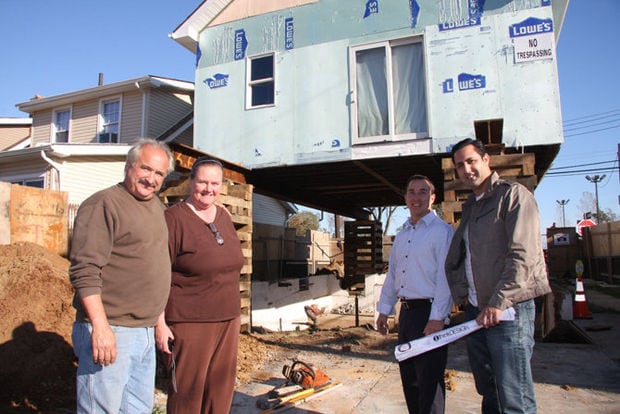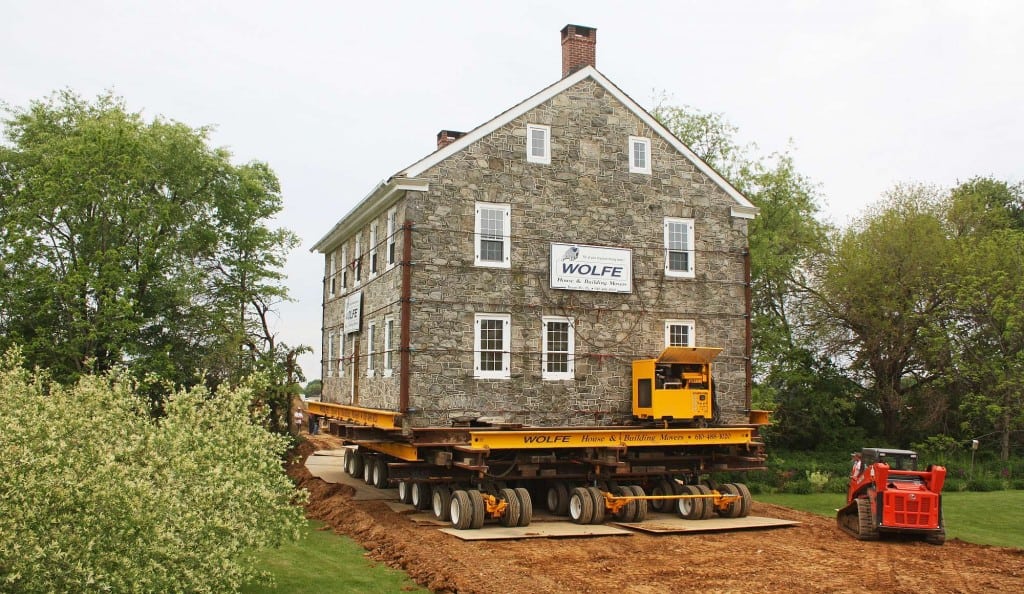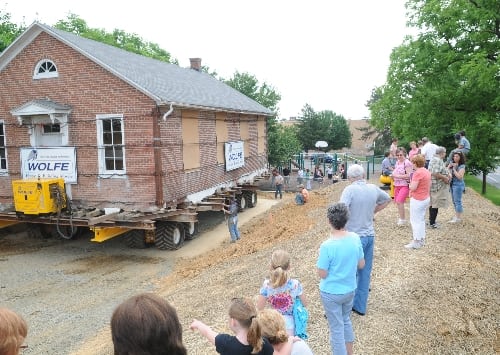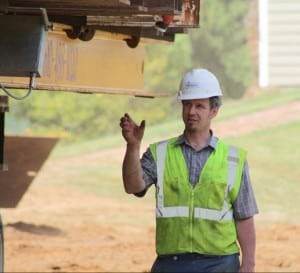How To Choose a Structural Moving Company

A home is a valuable possession for the majority of Americans. Many times, its value extends beyond the house’s worth in dollars. When you’ve made memories in a house, raised children, put in hours of restoration, it’s good to have options beyond packing up your belongings and saying goodbye. It’s good to have the option, sometimes, of moving the house, too.
Wolfe House & Building Movers has been relocating homes and other structures since the 1960s. Although many people are unaware of the feasibility of moving a building, it is a safe and cost-effective solution in many situations. We also specialize in lifting homes, typically to prevent flooding or if the home needs a new foundation.
Choosing which company to hire when you want to raise or move your home probably isn’t a decision you’re going to make on a whim. It’s wise to be informed before you decide who to hire as your structural mover/lifter. Structural lifting and moving is a specialized skill, and there aren’t very many of us who do it. However, as with any industry, some are better than others.
But how can you know?
Here are a few things you might want to consider if you’re researching structural moving companies for your project.
Researching Structural Moving Companies
1. Ask About Their Structural Moving Experience
A House Lifting & Structural Moving University doesn’t exist, which means that what we do is not something you can train for in school. The only way to learn the trade is to work under someone who has been moving buildings for many years. Some states and towns require structural movers to have someone working on the job who has 5 or more years of experience. We have been in business since the late 1960s and have multiple foremen who have been moving and lifting buildings for more than 20 years.
We’ve Completed Thousands
of Moving and Lifting Projects
Company president Jamin Buckingham has overseen
hundreds of successful projects. See our project gallery »
2. Ask About the House Moving Equipment They Use
Experience and know-how are both great to have, but without the right tools and equipment, a house lifting or re-location project can easily be delayed or derailed.
When your house is being lifted or re-located, you want equipment that is in good condition with fail-safes built in. You also want to make sure that your house is lifted with a Unified Jacking System. This system makes sure that each of the jacks lift at the same rate, even when there are different weights on each jack. This keeps the house perfectly level as it is being raised, and prevents anything more than cosmetic cracks from appearing in your plaster or drywall.
When performing an on-site move, a Power Dolly System is the safest and best way to transport your structure. This system drives the same wheels that are supporting the building and does so remotely with a proportional control system. This allows for speeds that range from imperceptible to a slow walk. Further, it allows for gradual speed transitions so there are never any jerking motions to destabilize the house.
We use the Buckingham Unified Jacking System and Buckingham Power Dolly System for our projects. The quality of the equipment we use is so important to us that we design and manufacture our own line of house moving equipment. You can see this equipment at www.buckinghamequipment.com.

3. Ask for References
Before signing anything, ask the company for 2-3 references. Speaking with previous customers can give you an insight into their experience, and can help you make a more informed decision. Any reputable structural mover should be happy to do this for you.

4. Visit a Project That’s in Progress Nearby
Check with the company to see if they have an active project nearby. This experience will give you a better idea of what is involved and how the company works. If you can’t visit one in action, ask to visit a project that’s already been completed.
5. Ask About Liquidated Damages Terms
Generally, a house lifting contract will specify a set number of days that the steel beams and cribbing will be allowed to remain under the house after it has been lifted or moved.
A daily or weekly fee will be charged if the new foundation is not ready to receive the house by the end of the agreed timeframe. This fee is not a penalty, but is intended to help to compensate the house lifting contractor for the loss of use of his equipment (he can’t use it to lift another house while your house is on it).
Be sure to ask how long the house lifter allows before charging a fee, and what the fee will be for your project, as the time allowed and the fee per day might vary depending on the amount of equipment needed to lift your house.
Also, if you find yourself up against the end of the days agreed upon, you may be able to purchase additional blocks of 30 days at a discounted rate, providing you do this before the original days are up. Talk to us about your questions and needs ahead of time and we’ll make the necessary arrangements.
6. Check Insurance Coverages
We carry one of the best insurance policies in the industry. This is important, because even though damaging incidents are rare in the industry, accidents can happen. Be sure your structural moving contractor has the following coverages:
- General Liability: Standard coverage is $1 million. General liability insurance provides coverage for property damage or personal injury resulting from a contractor’s work. However, most General Liability policies will not provide coverage for you house itself if it is to be lifted or moved (see riggers insurance for more on this). We carry $1 million in general liability.
- Umbrella: Standard coverage on this is $1 million to $2 million. The umbrella policy provides additional protection in the event that the limits of any of the underlying liability policies are exhausted. Our standard umbrella coverage is $2 million, but additional coverage is available upon request.
- Automotive: Standard coverage is $1 million, and that’s what we carry on each job.
- Workers Compensation: Standard limits vary according to the statutory requirements in each state. We carry statutory workers comp limits (or greater) in all states in which we work.
- Riggers (or Cargo): This is the policy that protects your house. Remember that general liability insurance generally will not protect your house from any damage that results from lifting or moving it. Always verify that your house lifting or house moving contractor has a current Riggers or Cargo policy with project-specific limits greater than the value of your house. Our Riggers Liability endorsement provides coverage for the value of your house and associated insurable costs up to $1 million dollars, with additional limits available, where appropriate, upon request. It is common for cargo coverage policies to provide coverage for only 30 or 60 days after the house mover begins work on your house. Our Riggers Liability Insurance endorsement contains no such time limitation. Any damage caused by us during the policy period is covered.
Contact Us To Talk About Your Project
At Wolfe House Movers, we believe that we provide the best overall lifting and moving experience, terms, and insurance. We aim to think of everything ahead of time to ensure that your experience with us is as positive as it can be.
For more information about our moving services, visit our FAQ page. To speak with someone about the specifics of a project, call us at 610-488-1020 to speak with one of our project estimators.

